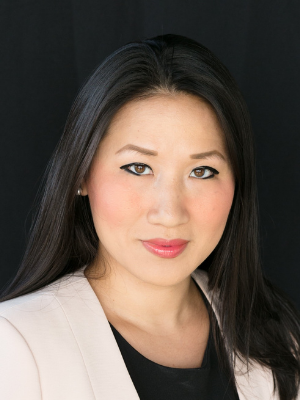 In the latest edition of the Glass Hammer, Megan Hogan, Goldman Sachs’ chief diversity officer, shares her path to the firm, comments on her passion for diversity, equity and inclusion, and discusses her interests outside of the office.
In the latest edition of the Glass Hammer, Megan Hogan, Goldman Sachs’ chief diversity officer, shares her path to the firm, comments on her passion for diversity, equity and inclusion, and discusses her interests outside of the office.
Megan Hogan, Goldman Sachs’ chief diversity officer, joined the firm in 2014 as a vice president on the Diversity & Inclusion team, and has spent her time at the firm supporting efforts related to the recruitment, development and advancement of diverse professionals.
Prior to her current role, Hogan led the diversity recruiting team, spearheading new programs such as the firm’s Black Analyst and Associate Initiative and Neurodiversity Hiring Initiative, which provide mentorship and networking opportunities to Black and neurodiverse individuals, respectively. In addition, Hogan’s team partnered with teams across the firm to establish the Market Madness: HBCU Possibilities Program earlier this year, which recruits students from Historically Black Colleges and Universities.
She notes that she’s most proud of launching the neurodiversity initiative in 2019 on World Autism Day. “As a mother of a child with learning differences, it has been important for me both personally and professionally to create opportunities for children like mine who are exceptionally bright, but navigate the world differently,” said Hogan.
A Thread of “Diversity, Equity, and Inclusion” Throughout Prior Work
“Prior to joining the firm, there was a thread of advancing diversity, equity and inclusion in my corporate law work,” said Hogan. She worked as a litigation associate at Willkie Farr & Gallagher LLP covering white collar, insurance, and complex commercial cases and trials. During that period, Hogan dedicated significant time to pro bono cases, primarily representing immigrants seeking asylum. “I come from an immigrant family – my mother’s family came from the Dominican Republic to find better educational and economic opportunity for themselves and their children. It’s always been important to me to advocate for people seeking refuge from persecution as a way to pay it forward and allow others to find those same opportunities,” said Hogan.
During an externship, she also spent six months working for MFY Legal Services, where she provided legal assistance to low-income New Yorkers to resolve issues in the areas of housing and foreclosure. “A large part of my work was focused on identifying housing opportunities for people who had difficulty finding affordable housing,” Hogan said. “This included protecting them from private actors or individuals who might be biased against them.
Commenting on her decision to interview at Goldman Sachs, Hogan said: “I ultimately realized that I wanted to work on diversity, equity and inclusion full time.” She went on to say of the firm’s diversity and inclusion work in recent years: “We have done a lot of great work to level the playing field across recruiting, and opening up opportunities at the firm to an even greater array of candidates.”
Recruiting and Diversity-Related Goals
Discussing Goldman Sachs’ recruiting and diversity aspirational goals, Hogan highlighted that the firm has “seen the power of having goals, as well as remaining transparent and holding ourselves accountable.”
She went on to underscore the importance of providing transparency to ensure that managers across the firm understand their role to recruit and retain diverse individuals on their teams: “We need to ensure that every individual throughout Goldman Sachs understands they have a responsibility to help reach our aspirational goals and foster inclusion and diversity.”
“I Never Lose, I Only Win or I Learn”
Hogan, who earned a BA in African-American Studies and Psychology from Yale University in 2003 and a JD from Fordham University School of Law in 2006, shared that early on in her career, she reflected often on a Nelson Mandela quote: “I never lose, I only win or I learn.”
She went on to note that, “As a first generation college student, I thought there was no room for failure or mistakes. I realized there should be no fear when it comes to failure – we only learn from our missteps over time, and it leads us to do more interesting things.”
Hogan also shared advice for individuals beginning their careers, noting the importance of taking risks: “After graduating from law school, I felt the need to have a five-year plan mapped out. But, by being so focused on implementing this plan, I didn’t take advantage of other stretch opportunities, such as mobility or working in different areas of law.” Her recommendation: “Innovate and learn by thinking outside the box, taking risks and betting on yourself.”
A Passion for Helping Others
Hogan has been a long-time advocate for addressing hunger insecurity throughout New York, a cause she describes as “near and dear to my heart.”
For several years, she has volunteered with the West Side Campaign Against Hunger, and notes that the employees of this organization are “on the front lines, making sure that homeless individuals or those in shelters have access to their next meal.”
In addition, Hogan serves as a member of the Advisory Board for the Center on Race, Law & Justice at Fordham University School of Law and the Hispanic Scholarship Fund’s New York Advisory Council.








